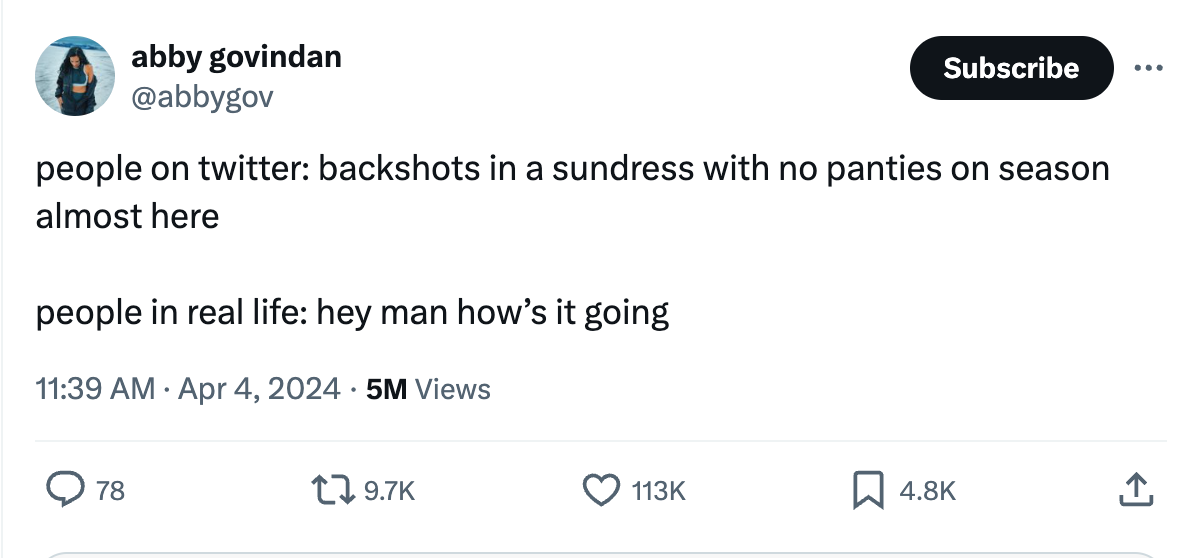Sundress Eroticism
The sundress and all the mystery surrounding what exactly it is offers a glimmer of hope for the state of our sexual culture.
In early June, there is almost the sense that the cultural libido is alive and well. Those first few hot days, the anticipation of summer and vacations and tan lines to come — the tension is practically tactile. You’ll feel it best if you go outside, touch grass, pass people on the street. But you can sense it every year online, too. Just look at all the posts about sundresses.
If ever there were confirmation that many women do, in fact, dress for the male gaze (of course we do!), it’s the sundress. Every spring we witness new tweets from men embracing that it is finally “sundress season,” and in turn we have a new debate about what exactly a sundress is. Men say they like women in sundresses, and women want to know more specifically what it is they’re referring to so that they can better select them. Of course, not every sundress wearer is choosing the garment to appeal to men. Above all, I think, most women like them because they are comfortable and simple in addition to being pretty and put-together. But men also like them for those exact same reasons, and there’s still some discomfort in acknowledging that dynamic. As women, we treat the idea of dressing to appeal to men as some sort of crime against our gender and selfhood rather than an organic instinct. We shouldn’t assume that a woman does something exclusively to attract a partner, but really, so what if she does?
As Rebecca Jennings reported for Vox last week, sundresses have become a source of both gender and racial politics this year more than others. More than just asking what a sundress is, we’re asking who we wear them for and why. “Sundress discourse, especially when men are driving it, feels reminiscent of an earlier era, one where women’s magazines regularly touted features about ‘what guys REALLY think of your outfit’ and offered advice on how to dress ‘for your man,’” she wrote. “That doesn’t happen as much anymore; social media ushered in an era of wider understanding of feminism and body positivity, which the media and entertainment industries reflected and sold back to us. Since then, viral ‘horny’ clothing items have usually been ones worn by men to be admired by women and gay men, from gray sweatpants to thigh-baring short shorts to the guy from Normal People’s chain necklace.”
Meanwhile, underscoring this debate is that of how the “sundress” label differs across racial lines. Very broadly speaking, Jennings explains, white people generally tend to view sundresses as above-the-knee, flow-y, lightweight dresses, while Black people generally use the term to describe tight-fitting maxi dresses. While the two dress types differ, the sources of their appeal is much the same. Both are comfortable, worn in warm weather and reveal some parts of the body while concealing others. Each suggest they’re easy to throw on and just as easy to remove, an effortlessly sexy outfit in one single item of clothing.
Keep reading with a 7-day free trial
Subscribe to Many Such Cases to keep reading this post and get 7 days of free access to the full post archives.









